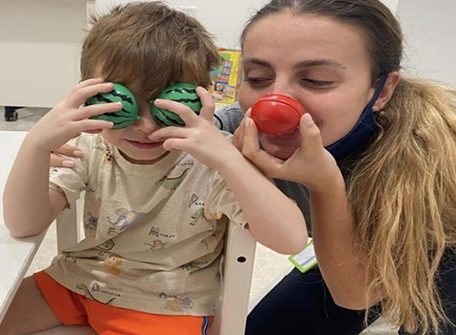Sometimes, parents notice that their child is struggling to reach language milestones and start suspecting a language delay. At the same time, they are often told to just “wait and see” if their child will outgrow their delay because the child is still too young to see a speech therapist or start therapy. Likewise, their surrounding people start sharing experiences with them like “our son could catch up to his peers without any intervention; the pediatrician advised us to wait until 3 years of age before we consider consulting with a speech therapist…”.
If You Are A Parent And You Are Facing The Same Challenge, What Is The Right Thing To Do?
You should know that no age is “too early”. It is right that every child develops at their own pace and in their own way, but there are milestones that should be reached by a specific age, and failure to reach these milestones can trigger concern.
It is also right that some children with expressive language delay catch up to their peers during the preschool years without any speech therapy intervention. However, others have persistent delays and do not grow out of their language delay without appropriate intervention. Since it is difficult to predict whether the child will catch up to his peers without any intervention or not, and since delay in language skills can be a sign of a more serious developmental disorder, early intervention is the best way to support the child’s development.
Why Choose “Early Intervention”?
The answer to this question has to do with the young brain’s capacity to change, create and reinforce new neural pathways to learn new skills and enhance existing cognitive capabilities. This is known as “neural plasticity.” The brain’s ability to restructure or rewire itself happens through stimulation from the outside environment that comes from exploration, experiences, practice, repetition, and specific training. The brain remains “plastic” throughout the human lifespan, but most research indicates that neuroplasticity is most constant and rapid during the first five years of life. Finally, we should know that early intervention does not just involve treatment and therapy, but it also covers education, support, and guidance for parents, which is key to the intervention’s success.
Early intervention services can change a child’s developmental path and improve therapy outcomes. Do not “wait and see”, just “start and see what will happen…”!






